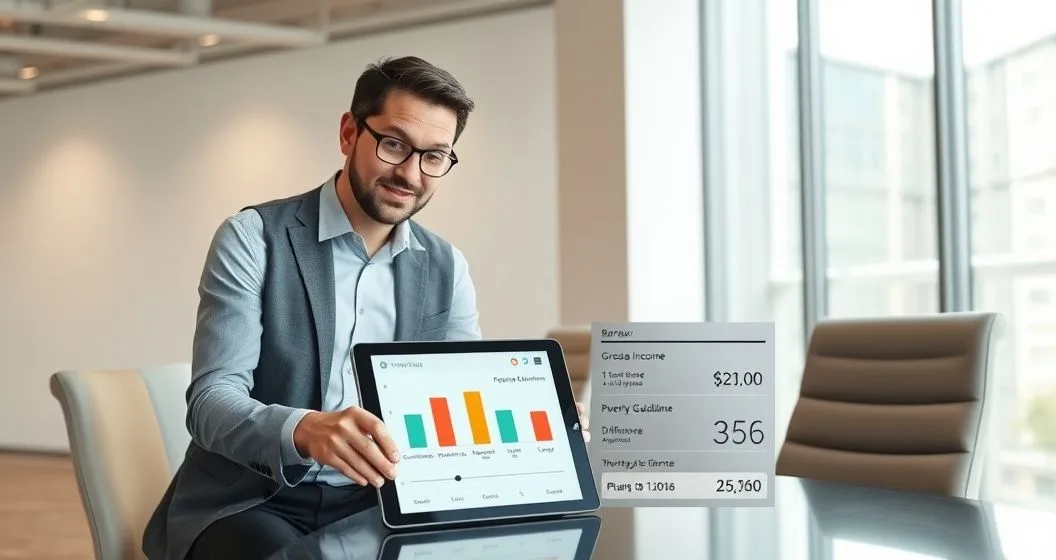Overview
Income-driven repayment (IDR) plans set federal student loan payments based on your income and family size instead of just the loan balance and interest. That makes monthly payments more predictable when earnings are low or variable. For plan-specific rules and the most current details, see Federal Student Aid (studentaid.gov) and the Consumer Financial Protection Bureau (consumerfinance.gov).
How the calculation works — step by step
- Determine your Adjusted Gross Income (AGI).
- Identify the poverty guideline for your family size (published yearly by HHS) and the multiple used by the plan (commonly 150% for many plans).
- Calculate discretionary income: AGI minus the plan’s poverty-guideline multiple.
- Multiply discretionary income by the plan’s percentage (this varies by plan).
- Divide that annual payment amount by 12 to get a monthy payment.
Key formula (simple):
Monthly payment = (Discretionary income × Plan percentage) ÷ 12
Example
- AGI: $30,000
- Poverty guideline for family of 1 (example): $13,590
- Poverty multiple (example): 150% → 1.5 × $13,590 = $20,385
- Discretionary income = $30,000 − $20,385 = $9,615
- If plan percentage = 10% → Annual payment = $9,615 × 10% = $961.50
- Monthly payment ≈ $961.50 ÷ 12 = $80.13
This example uses common assumptions to illustrate the arithmetic. Actual poverty guidelines and plan percentages can differ; always check the official plan page before deciding (Federal Student Aid: https://studentaid.gov).
How plans differ (what to watch for)
- Plan percentage: IDR plans use different percentages (typical ranges have been about 10%–20%), so two plans with the same AGI and family size can produce very different payments.
- Poverty multiple: Many plans use 150% of the poverty guideline; some plans have different thresholds or exceptions for undergraduate vs. graduate loans.
- Forgiveness timeline: Most IDR plans offer loan forgiveness after 20–25 years of qualifying payments; Public Service Loan Forgiveness (PSLF) forgives remaining balances after 120 qualifying payments while working full time for a qualifying employer (studentaid.gov).
- Capitalization and interest: Unpaid interest can capitalize in some situations (for example, when switching plans or leaving deferment), which increases the balance. See our explainer on interest capitalization for details: How Interest Capitalization Works in Student Loans (https://finhelp.io/glossary/how-interest-capitalization-works-in-student-loans/).
Common borrower actions that affect the payment
- Annual recertification: You must recertify income and family size each year. Missing recertification can restore a higher standard payment or trigger capitalization. (Federal Student Aid: https://studentaid.gov/resources/repay-loans/understand/plans/income-driven)
- Consolidation: Consolidating FFEL or Perkins loans into a Direct Consolidation Loan can make them eligible for IDR. Consolidation can also change capitalization and repayment time; see our consolidation overview: Pros and Cons of Consolidating Federal and Private Student Loans (https://finhelp.io/glossary/pros-and-cons-of-consolidating-federal-and-private-student-loans/).
- Changing income or family size: Because payments are based on current income and family size when you recertify, payments can go up or down year to year.
Practical tips from practice
- Run the numbers for at least two IDR plans before enrolling. Small differences in the percentage or poverty multiple can change total interest paid and forgiveness timing.
- Keep documentation for every year’s recertification (tax returns or alternative documentation) — servicers sometimes request proof.
- If you’re pursuing PSLF, track qualifying employment and payments carefully; paperwork errors with servicers are common and avoidable with documentation.
Common mistakes and misconceptions
- ‘‘IDR will ruin your credit’’: False. Enrolling in IDR changes your payment amount but doesn’t lower your credit score by itself; missed payments do.
- ‘‘All federal loans automatically qualify for IDR’’: Not always. Some legacy loans must be consolidated into a Direct Loan to be eligible.
- ‘‘Low payment means forgiveness is guaranteed’’: Only payments made under the rules for a plan and any applicable programs (like PSLF) count toward forgiveness.
Short FAQ
- Can I switch plans? Yes — borrowers can switch plans at any time. Switching can change immediate payments and long-term interest accrual.
- Will payments increase if I get a raise? Yes — recertification captures higher income and can increase your payment.
- How long until forgiveness? Typically 20–25 years under IDR; 10 years under PSLF with qualifying employment and payments.
Where to confirm plan rules and calculators
- Federal Student Aid IDR resources and payment calculators: https://studentaid.gov
- Consumer Financial Protection Bureau’s borrower guides: https://consumerfinance.gov
Internal resources
- Read more about how unpaid interest can add to your balance: How Interest Capitalization Works in Student Loans — https://finhelp.io/glossary/how-interest-capitalization-works-in-student-loans/
- Consider consolidation tradeoffs before you act: Pros and Cons of Consolidating Federal and Private Student Loans — https://finhelp.io/glossary/pros-and-cons-of-consolidating-federal-and-private-student-loans/
- If your servicer changes, learn what typically shifts and what to check: Transferring Federal Student Loans Between Servicers: What Changes for You — https://finhelp.io/glossary/transferring-federal-student-loans-between-servicers-what-changes-for-you/
Professional disclaimer
This article is educational and not financial or legal advice. IDR rules and poverty guidelines change; check official sources and consult a qualified financial counselor or your loan servicer for guidance tailored to your situation.



